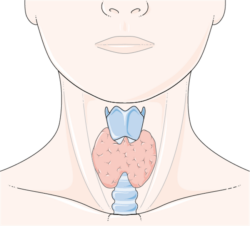On Twitter I came across a post from a physician suggesting that 1) puberty-blocking drugs were completely safe and reversible and 2) that for one to believe otherwise suggested a bias in that individual. Having studied these drugs when they were used across various women’s health modalities, long before they were used so broadly for this current application, I can say without a doubt that these drugs are neither safe nor are their effects completely reversible. As far as the bias argument goes, while it is true that many individuals use these and other hormone-modulating drugs as cudgels in various culture wars, to foreclose upon a discussion of drug safety a priori for fear of being aligned with a particular viewpoint is medical negligence pure and simple. Every drug, no matter its cultural or political significance carries with it certain risks. Those risks are not minimized because we want them to be or because we choose not to recognize them. That is not how pharmacology works. Heck, that is not how life works.
We see this type of behavior with hormonal birth control. If one dares to question the safety of these drugs, one is accused of being anti-women’s rights. We see this in discussions of vaccine safety. If one dares to question the safety of vaccines, one is accused of being anti-vax, or more recently, anti-science. We now see it with the puberty-blocking drugs where if one dares to question the safety of these drugs, one is accused of being anti-trans. In all cases, the ‘anti – [fill in the blank]’ label serves the manufacturers of these drugs well. So long as we bicker amongst ourselves, so long as the drug itself can signal some sort of inherent virtue or lack thereof, the safety of these drugs can never be impugned.
What many in the current battle fail to recognize, is that these drugs have been on the market for decades, first as a treatment for prostate cancer, then and currently as ‘treatments’ for endometriosis, fibroids, ovarian cysts, precocious puberty, and with in vitro fertilization. In every case, those who take these drugs are rendered chronically ill. These are drugs neither new nor safe, or even specifically designed for their current application. They have simply been rebranded to take advantage of a new market.
What do these drugs do? Technically, they override the hypothalamic-pituitary-gonadal or ovarian feedback loops that control the synthesis of the androgens and estrogens, the sex hormones. They do so at the level of the hypothalamus in the brain by overriding the production of something called gonadotropin-releasing hormone (GnRH). This then prevents signals to and from the pituitary gland and the testes and ovaries from fully cycling, effectively blocking the synthesis of testosterone, estradiol, and some of the other metabolites. Non-technically, and more accurately, they chemically castrate the user, by severely and immediately blocking the synthesis of the reproductive hormones, testosterone, and estradiol.
This begs the question, why would anyone think this type of drug would be a safe option for anyone, let alone children? Compartmentalization.
Within the current medical framework, reproductive hormones are believed to affect only the reproductive organs and nothing more. So if we block them, we needn’t worry about anything but their direct effect on reproductive tissues. This framework allows one to see only what one wants to see. It is the framework that buys into such silliness that we can fundamentally alter the regulation of these hormones without so much as affecting anything else in the body or the brain. Nothing. Nada. Nil. Reproductive hormones control reproduction and that is it. If one buys into this nonsense, well of course we can postpone puberty by using some of these drugs, and when ready reverse course, open the spigot and let puberty flow. Easy peasy.
Not only is this framework completely ignorant of how the body works, but blatantly negligent. The body is connected to itself. Its individual parts are not separate entities. Its systems do not work in isolation from each other, especially not hormones. Steroid hormones are synthesized and metabolized from each other and into other steroid hormones. They are part of extensive pathways that are constantly reconfiguring based on all sorts of endogenous and exogenous signals. Steroid hormones organize and activate critical systems relative to sex and development but are not limited to just those related to sex and reproduction. They modulate every cell in the body. There are steroid hormone receptors on the neurons in the brain that modulate neurotransmission (and vice versa), on the cardiomyocytes that influence heart rate, rhythm, and pressure, on muscle and bone cells that regulate growth and stability, on immune cells that influence inflammation and other patterns, and on the mitochondria, where cellular energy and all sorts of other processes, including steroidogenesis, are managed.
Estrogen receptors, for example, are all over the brain and are responsible for upregulating hundreds of genes involved in all sorts of brain activity, not just those involved in the development of sex characteristics or reproduction. These hormones are so important to brain function, that the brain not only allows them to cross the blood-brain barrier but also synthesizes these hormones de novo – from scratch. On the mitochondria, the estrogen receptor influences the shape of the mitochondria, such that in the absence of estradiol, a hormone blocked by these drugs, the mitochondria become misshapen, only to die a messy, necrotic death.
This begs the question, if these hormones are so important to general functioning, what do we think happens when we block their production, especially during a critical phase of development when the totality of the organism is poised for a huge growth and development spurt? Do we think somehow that magically only reproductive function is affected? That all of those other hormone-influenced cells will not be affected? Or that the other hormone pathways will not be affected. Or that the mitochondria, the energy engines of the cells, will somehow function just as well absent a critical substrate? Apparently, we do.
While there are people for whom these drugs represent an existential threat to their narrow ideologies, for most of us, questioning the safety of these compounds has nothing to do with ideology or bias and everything to do with the chemistry.
For more information on mechanisms, ill effects, and the long history of unethical marketing of this class of drugs, please read the various articles on Lupron. That is the name under which this type of drug is used in women’s health. This study illustrates the scope of injury.
We Need Your Help
More people than ever are reading Hormones Matter, a testament to the need for independent voices in health and medicine. We are not funded and accept limited advertising. Unlike many health sites, we don’t force you to purchase a subscription. We believe health information should be open to all. If you read Hormones Matter, and like it, please help support it. Contribute now.
Yes, I would like to support Hormones Matter.
Photo by Markus Spiske on Unsplash.
















Will definitely be sharing this, Chandler. Thank you.